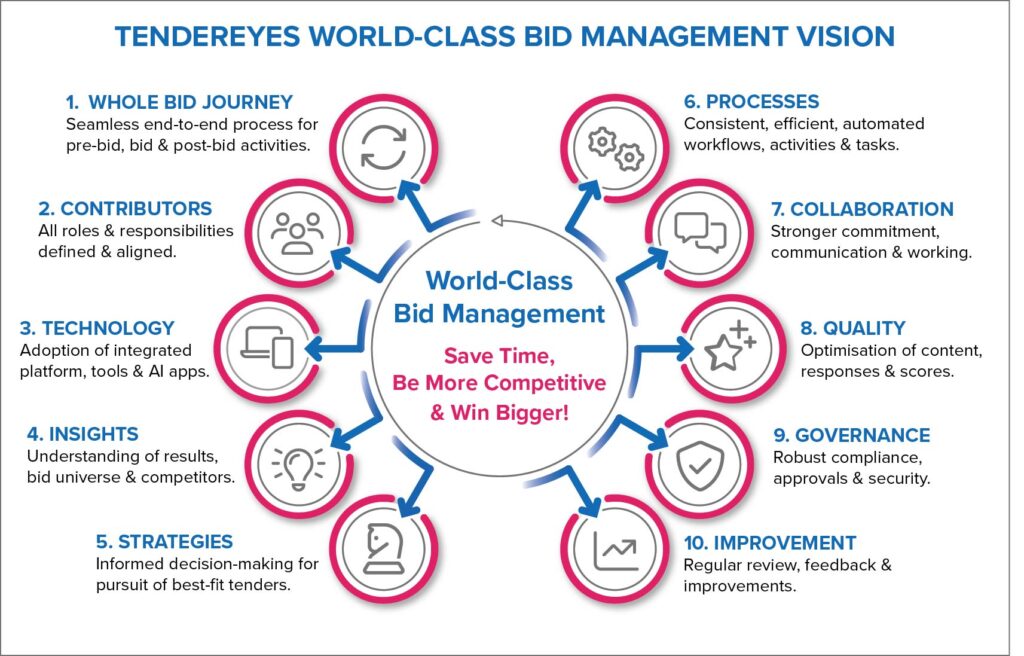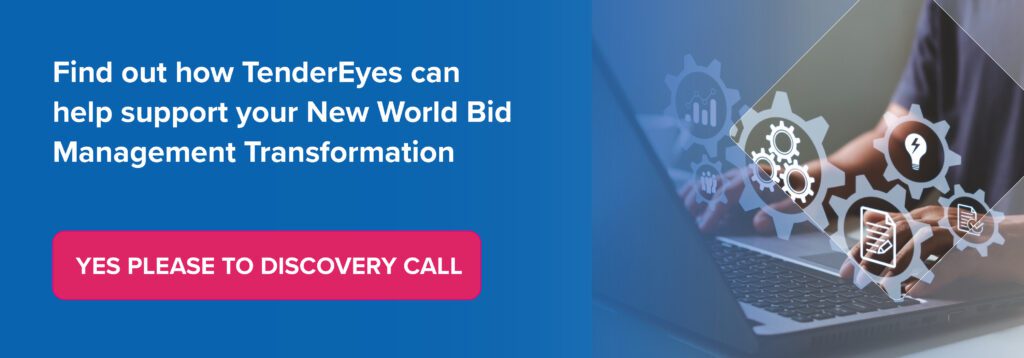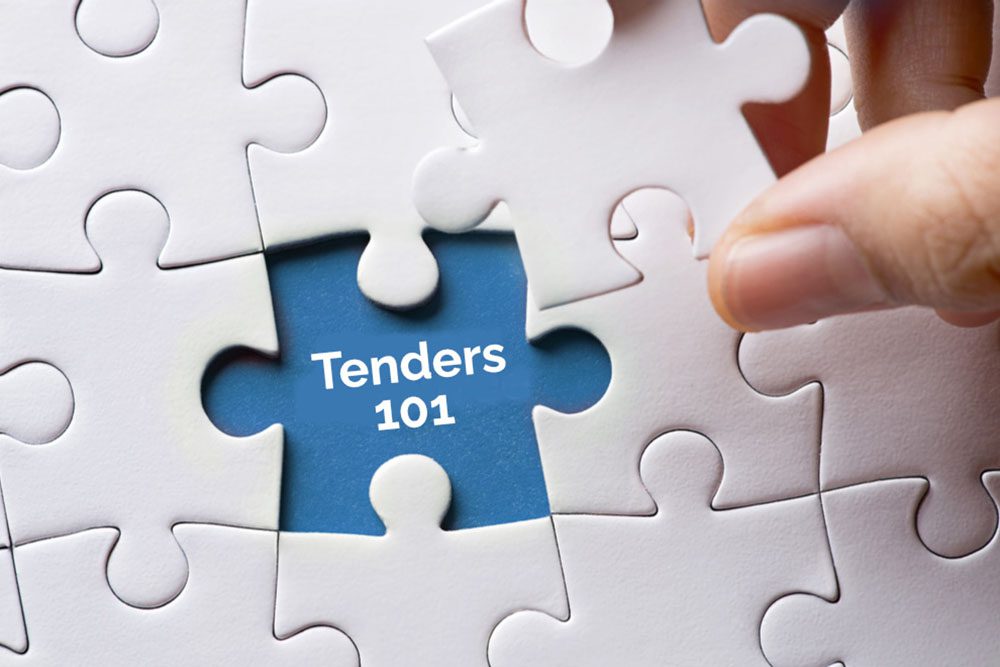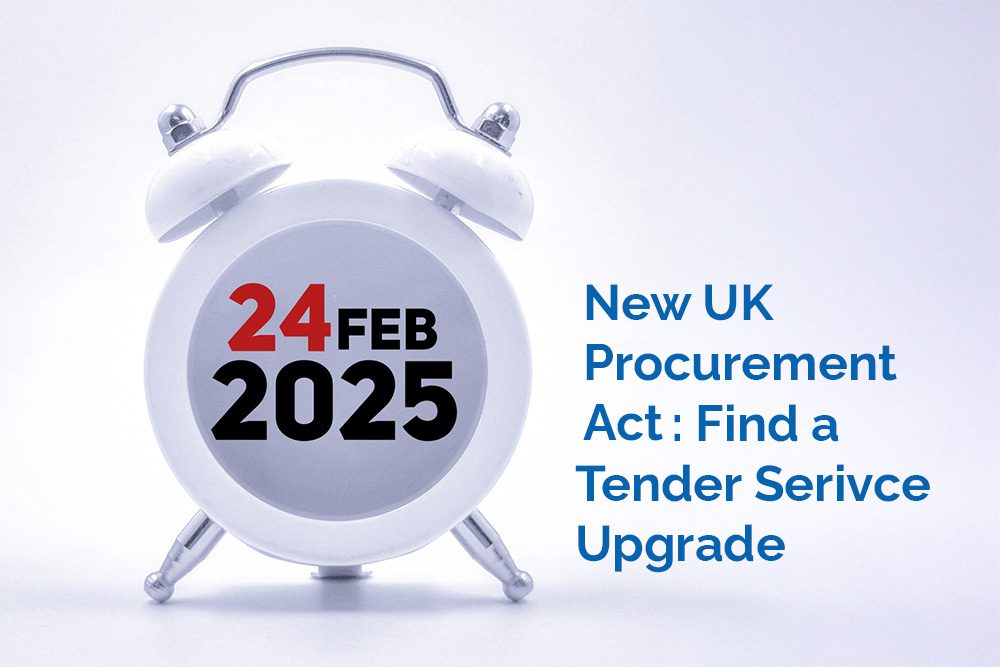Companies can no longer afford to keep using informal processes and outdated generic support tools to bid for high-value public procurement tenders!
With potential critical revenues at stake, a new way of working is imperative! Adopting a more holistic, structured approach will ensure businesses continue to win in an increasingly competitive arena.
In this blog we will explore this New World Vision to achieve world-class bid management, save time, be more competitive and win big!
Old World Bid Management: Why its Broken!
Let’s start with a harsh truth: many businesses are still stuck using unaligned strategies, inefficient processes and generic business tools to manage tenders worth millions.
That may have worked 10 years ago—but today, it causes:
- Missed deadlines
- Inconsistent submissions
- Disconnected teams
- Diminished win rates
This is what we call Old World Bid Management. It’s reactive, resource-draining, and riddled with risk.
The demands of modern procurement—particularly in regulated sectors like MedTech, infrastructure, and energy—have evolved far beyond what these basic processes and tools can handle.
So what’s the alternative? It’s time for a New World Vision—one built around strategic insight, process efficiency and technological integration.
The New World Bid Management Vision
The New world Vison for bid management takes a more holistic approach, considering the whole bid journey, objectives, roles and responsibilities.
Each element is optimised and aligned to ensure bid management efficiency, proper use of resources and enhanced competitive edge. All working and focused to deliver the best possible submissions for best-fit tenders.
The TenderEyes New World Vision consists of 10 elements that need to be considered when delivering competitive world-class bid management. This includes
- Whole Bid Journey Integration
- Unified Contributor Ecosystem
- Technology That’s Purpose-Built
- Data-Driven Insights
- Strategy-Led Pursuit
- Process Consistency & Efficiency
- Stronger Communication & Collaboration
- Optimised Content & Submission Quality
- Governance, Compliance & Risk Mitigation
- Continuous Improvement

1. Whole Bid Journey Integration
The foundation for new world bid management is the consideration of the whole bid journey from pre-bid to bid to post-bid activities.
With each stage impacting tender submission quality, win rates and contracts delivery, it is vital that all areas are running effectively and efficiently.
If, for example your bid strategies are weak or mis-directed due to limited understanding of your bidding universe, you may pursue mis-matched tenders or miss best-matched opportunities. Alternatively, your bid strategies and opportunity qualification may be strong but your content management ineffective, leading to poor quality tender responses and submissions.
It’s a big task ensuring all stages and elements of your bid process are aligned and working well together, but it is essential in this increasingly competitive arena.
There is no quick fix, it takes time, planning and resources to achieve. But can be managed through a phased approach and continuous improvement. Adopt world-class bid management practices, competitive advantage and better bid wins is not a single activity but a continuous, ongoing approach to bid management.
The best organisations design a seamless bid journey that:
- Targets the right opportunities early
- Streamlines bid creation and approvals
- Tracks performance after contract award
- Continues to identify gaps and improve processes, activities and outcomes.
Winning starts long before submission—and continues long after.
2.Unified Tender Contributor Ecosystem
Bidding for tenders is not an individual activity. It relies on numerous teams, levels of expertise and responsibility across the whole business. Each contributor plays a critical role in the process and must be considered in any review and improvement plan.
This includes:
- Executives defining bid strategy
- Marketing teams optimising bidding universe opportunities
- Sales teams engaging with Procurement Agencies & qualifying opportunities
- Bid managers orchestrating tender submissions
- Subject matter experts contributing submission content
- Product, legal, regulatory, and finance teams providing input
- Operations teams to deliver won contracts.
World-class tendering considers and aligns all contributors—across teams, regions, and time zones—with defined roles, responsibilities, and accountability.
3. Technology That’s Purpose-Built for Bid Management
Many organisations—surprisingly, even large corporates—still rely on generic tools like email and spreadsheets to manage their tendering processes. These tools may suffice for basic tasks, but they fall short when it comes to the scale, speed, and complexity of modern procurement.
Some businesses attempt to fill the gaps by using point solutions, such as third-party services for tender sourcing or AI-driven tools for generating proposal content. While helpful, these fragmented approaches often fail to deliver the consistency, visibility, and control needed to compete effectively in today’s fast-paced bid environments.
In such a competitive arena, companies must think beyond isolated tools. Success demands an end-to-end, integrated solution that supports the full bid lifecycle—from market intelligence and strategy development through to tender sourcing, bid creation, submission, evaluation, and contract delivery.
A purpose-built platform, such as TenderEyes, empowers organisations with the tools and structure needed to drive consistency, collaboration, and control across every stage of the bid journey. It provides:
- Powerful data analysis and actionable insights
- Reliable and consistent opportunity sourcing
- Smart, centralised content management
- Automated workflows that reduce admin and errors
- Role-based collaboration and accountability
- Enterprise-grade security and robust approval processes.
The right platform doesn’t just support your bid activity—it transforms it, unlocking greater efficiency, better outcomes, and a stronger competitive edge.
4. Data-Driven Bidding Insight
One area that businesses can certainly improve and take advantage of is data. Historically, businesses have relied on disparate, out of date intelligence and hearsay to make strategic decisions.
But businesses need deeper knowledge and understanding of their bidding universe and competitor landscape to deliver world-class bid management.
By leveraging available Contract Notice & Awards data and insights, organisations can deliver better informed decision making. However, compiling and managing such big datasets is challenging, requiring expertise, budget and resource. Using a solution such as TenderEyes Market Insights, provides the knowledge without the hassle. This includes:
- Data analysis and insights to monitor and address include:
- Wins, losses and market share
- Performance gaps and missed opportunities
- Upcoming opportunities
- Competitor landscape and activities
- Industry trends and innovations.
Knowing your “bidding universe”—your market positioning, competitors, and buyer behaviour—gives you a decisive edge.

5. Strategy-Led Tender Pursuit
Ensuring your business is prioritising and pursuing the best-matched tenders, with the highest win probabilities is essential.
However, many businesses still take the reactive ‘bid for everything’ mentality and use valuable time and resources trying to compete for mis-matched contracts. These tenders will have lower win probabilities and make it hard for your teams to submit competitive, compelling and convincing bids. They may also open you up to financial and reputational risks if won.
In the new world vision businesses focus purely on their best-fit tenders. This requires well-informed robust strategies and tactics, aligned to business objectives, goals, products and services. World-class organisations flip the script.
They develop robust strategies to:
- Prequalify tenders effectively
- Match opportunities to core strengths
- Pursue only best-fit tenders with high success probability.
This approach optimises resource allocation and increases profitability—especially critical when product development and regulatory costs are high, as in MedTech.
6. Tender Process Consistency & Efficiency
Time is such a critical factor in bidding. Any roadblocks or delays can severely impact the quality of tender submissions and results.
Old world bid management is fraught with inconsistent project management as well as frustrating and time consuming repetitive manual tasks.
“On average, 26% of an employee’s day will be wasted on avoidable administrative chores, unnecessary tasks and outdated ways of working.” CFO
Delays in opportunity qualification, project mobilisation, information requests and returns as well as approvals are commonplace. This results in rushed submissions that secure low evaluation scores and reduced win rates.
The new world vision for bid management looks to resolve working inefficiencies across the whole bid journey. Giving your teams the space and time to finesse tender responses.
Adopting Business Process Management (BPM) methodologies together with a dedicated bid management software provides your teams with a powerful platform to become much more efficient. This includes:
- Rapid project mobilisation
- Standardised project plans, templates and frameworks
- Standardised decision gates and approvals
- Automated workflows, task assignments and reminders
- Easy project progress, deadlines and task completion tracking.
Automation doesn’t replace people—it empowers them to focus on the value-added work that matters – the pursuit and submission of best-fit tenders.

7. Deeper Bidding Collaboration
With so many individuals and teams involved in tendering, teamwork is essential. But also very challenging, given the complexity of the tasks and wide variety of roles, responsibilities and expertise involved. Teams may also have the additional challenges of working in different locations and time zones.
In new world bid management, it is imperative to foster contributor engagement and commitment. All contributors need to understand their responsibilities and the importance of completing tasks to deadlines but also to deliver to the best quality possible.
Good communications and collaboration are key to success supported by:
- Real-time updates across departments
- Early notice and assignment to tender projects
- Clear assignment of roles, responsibilities and tasks
- KPIS, education and training
- Regular briefing and update meetings
- Easy access to tender information, requirements and scoring criteria
- Transparent, trackable changes and approvals
- Opportunities for reviews, feedback and improvements.
Providing a centralised platform for all contributors and their bid activities, reduces errors and delays, resulting in improved commitment and response quality.
8. Optimised Tender Content & Submission Quality
‘Content is King’ is a well-known phrase in the marketing world. And it is equally true for bid management. Without quality content your bid submissions will fail!
But many organisations still struggle with content management. Without a central ‘Bid Library’ teams are required to search for content from individuals in different teams and areas of expertise. This causes unnecessary delays and rushed responses. And in some instances, the reuse of previous low scoring responses.
It is essential in the new world to have a well organised and managed central knowledge bank or bid library. This is where all business information, policy documents, images, collateral and standard Q & As are created, stored, reviewed, updated and approved for use in tender submissions.
This will help Subject Matter Experts and Bid Teams better deliver quality content. As well as ensure tender answers are optimised to receive the highest evaluation scores possible.
As well as reviewing tender responses against procurement agency evaluation criteria, applying an additional internal quality framework can gain further competitive advantage. For example the TenderEyes 4 Cs Model can help your teams elevate your tender responses, ensuring they are compliant, competitive, compelling and convincing. Thus improving potential evaluation scores and win probabilities.
World-class content management includes:
- Easy access to a well-maintained central library of content
- AI powered tools to speed up search and content creation
- Education and training to optimise writing skills
- Full understanding of procurement agency requirements and scoring criteria to accurately respond
- Time to review, self-evaluate and improve responses before submission
- Continuously testing and improving standard content.
Every evaluation point counts! Just one point could be the difference between winning and losing!
9. Bid Governance, Compliance & Risk Mitigation
Your tender submissions contain a great deal of business information and Intellectual Property, with the potential to put your company at financial or reputational risk, if information is inaccurate or out-of-date.
It is also vital to ensure your tender submissions adhere to legal, financial, and regulatory public procurement requirements, as well as your own internal governance.
New world bid management includes transparency and tracking of activities and decisions to ensure compliance and risk management. This includes:
- Formal approvals and audit trails
- Data security and access controls
- Compliance monitoring and version control.
You’re not just protecting your bid—you’re protecting your brand and your business.
10. Bid Management Continuous Improvement
With businesses under constant pressure to complete tenders to tight deadlines, little time may be given to reviewing and improving performance and results. But this activity is imperative to change or improve outcomes.
World-class bid management includes the time and space within project plans and activities for teams to review, analyse and discuss performance and results. This helps identify areas of inefficiency, unnecessary delays, poor decision making or downturn in wins. This leads to new ideas, improved engagement and commitment as well the development and implementation of improvement plans.
“Companies that actively embrace continuous improvement practices often experience a 10-30% increase in efficiency.” McKinsey & Company
It is important to also consider how your bid management solution will help support these additional improvements. This may include using additional functionality within the solution or creating new automated workflows, more detailed project plans or decision gates to improve efficiency and outcomes.
This is not a one-time activity but a continuous process to keep improving and maintain competitive edge. Regular reviews need to include:
- Debriefs after every major bid
- Strategy realignments quarterly
- Performance tracking and benchmarking
- Development and implementation of regular improvement plans.
Combined with analytics, continuous improvement leads to better decisions, stronger submissions, and increased win rates over time.
If you are interested in adopting this new world vision, then talk to the TenderEyes Team.







